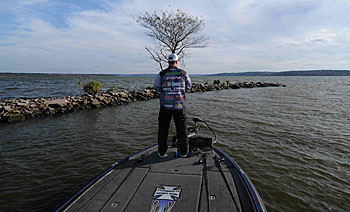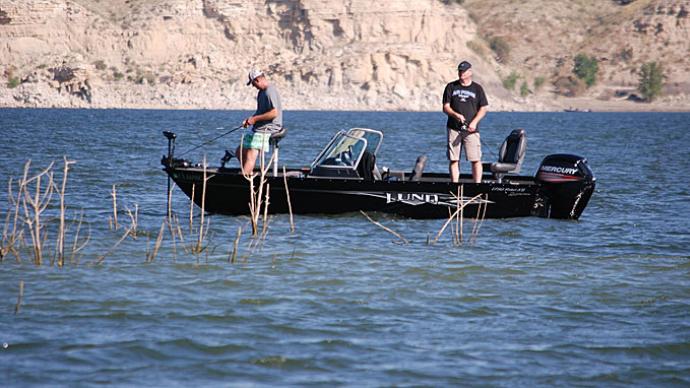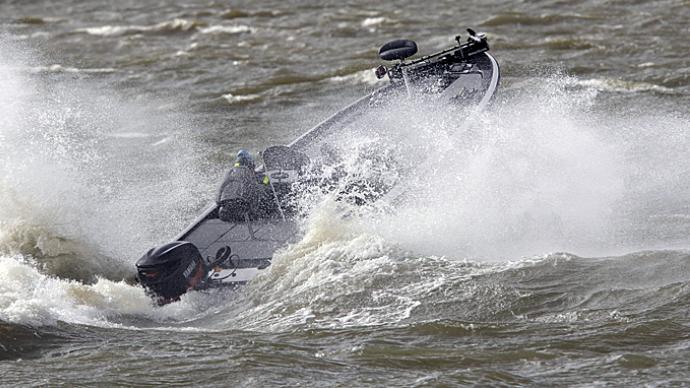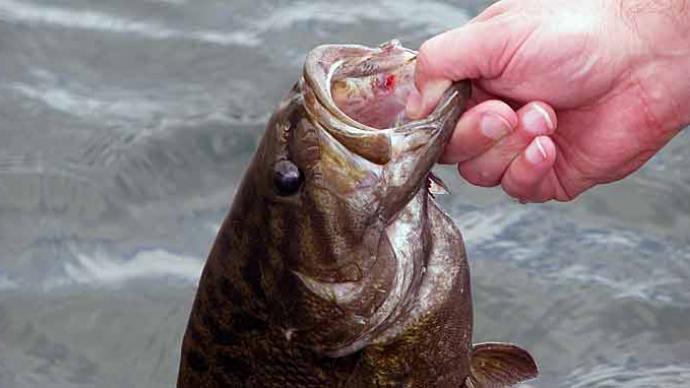
The wind can be a friend or foe to a bass angler.
“It’s terrific as long as the wind doesn’t create too much mud,” says Bassmaster Elite Series pro Fred Roumbanis. “That is kind of the downfall with the wind. It is really kind of bad for certain types of banks such as clay that causes mud to churn, but on rocks and riprap and grass, it is a good thing.”
The wind stirs up microorganisms in the shallows causing baitfish to flock to the bank, with bass moving in next. Roumbanis usually finds this activity on wind-blown rocky banks or weedy shorelines.
Roumbanis relies on the wind to hide his presence when fishing in clear, shallow water. "(The wind) breaks up the surface, so bass aren’t as spooky,” he says.
The clarity of a lake often determines whether the wind is a friend or foe to Roumbanis. He prefers fishing in the wind on clear lakes. “It improves the fishing on clear water more so than in stained water,” he says. “In stained water, fish are already protected, and they don’t notice you as much because it takes more vibration to get their attention.” He notes in clear water, you have to be stealthier when the weather is calm, but a wind allows you to be more aggressive in your presentations.
The two-time B.A.S.S. winner suggests if you see giant bass in clear water with a slick surface, but the fish ignore your offerings, then make sure you return to that area when the wind creates some chop on the water. “You can roll into that area and really put the hammer down and catch those fish,” he says.
The touring pro favors fishing a wind on a sunny day in clear water because the combination of sunshine and wind makes it more challenging for bass to see him. When fishing on a cloudy, windy day in clear water, he believes bass can see a lure better, so he opts for more natural-looking baits then.
The Oklahoma angler doesn’t mind fishing a wind that churns up a bank and stains the water. However, he avoids wind-blown banks where the water color looks like chocolate milk. “If you can catch the first part of the wind even when you see some clouds of mud coming off the bank, that is fine,” he says. “Usually that (dirty water) gets pulled up to the surface, but underneath it is still pretty clear,” Roumbanis suggests you can then catch bass in the mud line with jerkbaits and spinnerbaits.

In most cases, wind out of the west is best for fishing, but Roumbanis believes any wind is better than no wind. He disdains cold winds from the north and south winds on large northern lakes, which tear up the vegetation when waves crash into the northern banks.
Wind velocity also dictates if the wind is good or bad. “I would rather have a breeze of 4 to 5 mph,” Roumbanis says. “Anything after that, you are starting to play with the body of water you are fishing.” He has fished lakes where a 10 mph wind is “no big deal,” but a 10 mph wind blowing across a vast body of water can create huge waves when he is on the downwind side of the lake.
The area he targets determines whether Roumbanis fishes with or against the wind. “If you are trying to hold on an offshore spot, then you have to put your nose into the wind,” he says. “There is just no other way to do it.”
If he is fishing the shoreline, Roumbanis points the noise of his boat in the same direction the wind is heading. “I like to coast with the wind and not have to use the trolling motor as much,” he says.
Roumbanis believes drifting with the wind is a quieter presentation and makes it easier to cast without backlashing a baitcaster. “You might just have to make several drifts because you are never going to cover (your spot) thoroughly,” he says.
Fishing the lee side of specific structure also produces for Roumbanis on windy days. “A lot of times, the wind will create little eddies and blow-throughs between islands, and those back sides are outstanding then,” he says. “The fish are going to be sitting there ambushing bait.” In that situation, Roumbanis throws a swimbait into the calm area and pulls it back into the current to trigger strikes.
Action lures work best for Roumbanis when he is toiling in the wind. “A spinnerbait is one of my favorites,” says Roumbanis, who also lists bladed jigs and crankbaits among his favorites for wind fishing. “If there is a good crawfish population around, I like that (Gene Larew) Biffle Bug too because I can move it faster with a little heavier jighead.”
When the wind blows on your favorite bass fishery, take advantage of its good traits to catch more fish.




